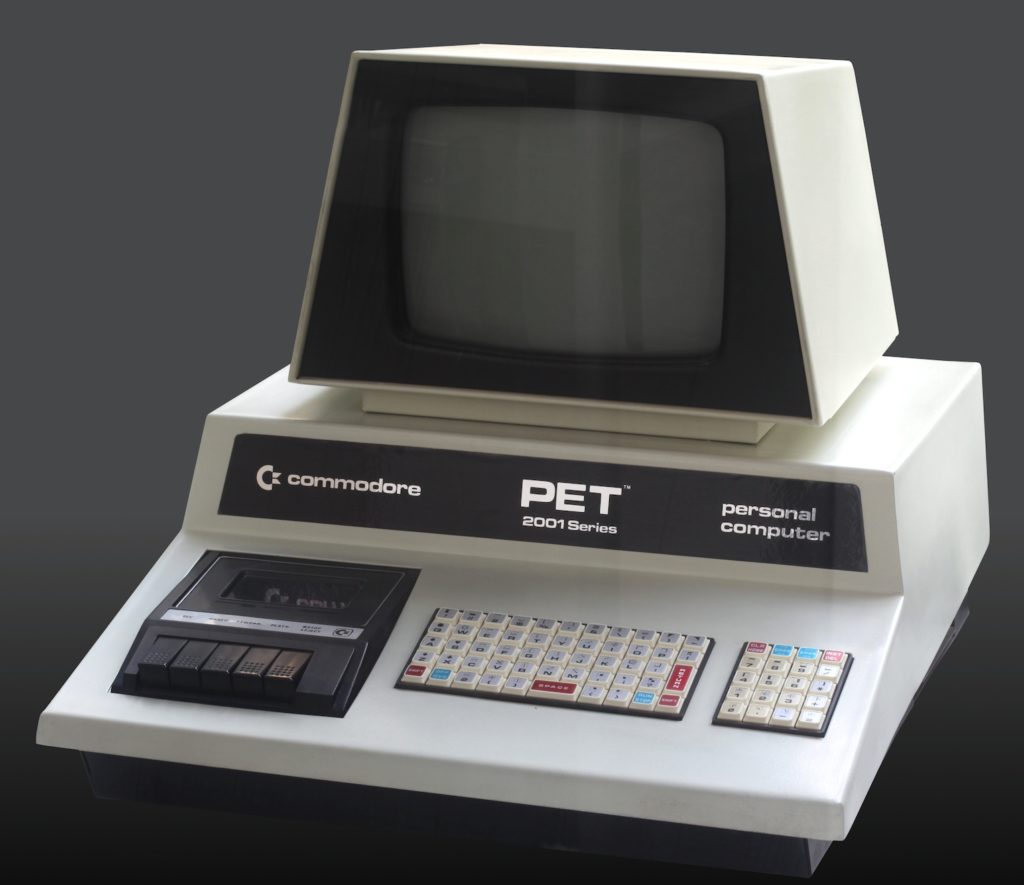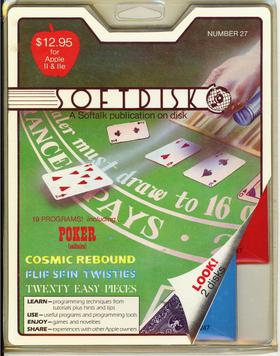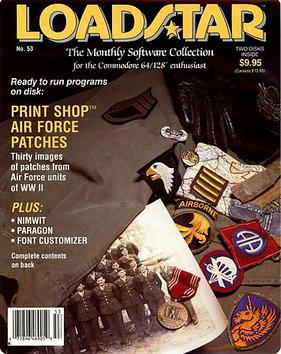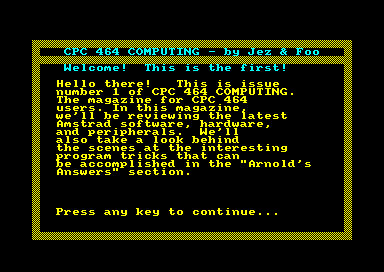Magazines, right? Who reads them? Well… you, we hope – otherwise our whole website, which is basically an electronic magazine, is going to have no readers!
The idea that a magazine can be electronic is very commonplace now; in fact many blogs are basically electronic magazines. What might surprise you is that electronic magazines are not new – they actually pre-date the World Wide Web! Let’s take a look at some of the most notable entries.
CURSOR
One of the earliest digital magazines, if not the first one ever, CURSOR was a magazine for the Commodore PET that was distributed on cassette, with an accompanying short newsletter; thus making it the first electronic magazine to have a cover-mounted paper magazine accompanying it. Yes, it really is Opposite Day.

CURSOR lasted for 30 issues and consisted primarily of six pieces of software with an accompanying cover program that acted as the magazine proper. It began publication in 1978, the year after the PET was launched, and closed in 1980 with the end of the PET’s production by Commodore.
Thirty issues for a magazine on cassette that’s produced from someone’s house is pretty good going, I think you’ll agree. Many electronic magazines these days wouldn’t ever get close to rivalling that amount of time or number of updates in their lives. CURSOR shaped everything that was to come after.
Softdisk
Launching in 1981, Softdisk is one of the earliest disk-based electronic magazines. Its target audience was Apple ][ owners and while it was initially a subscription-only magazine, it eventually saw retail release in a plastic package that will be intimately familiar to anyone who was a shareware fan or an early adopter of the IBM PC.

Softdisk is unique amongst disk magazines because it utterly obliterates almost all the competition in terms of longevity. This magazine lasted until 1995, long after production stopped on the Apple ][ and well into the Macintosh era.
While its older issues were quirky (as would become commonplace for e-fanzines during the 8- and 16-bit eras) and the majority of the content from issue one was re-used in issue two, the magazine became far more like regular print publications when it moved toward retail release. This may have helped it to gain a loyal audience; and it even had its own spin-off magazine, Softdisk G-S, which catered to Apple IIgs users.
Spectrum Computing
Let’s jump across the Atlantic now, to take a look at the first of several electronic magazines for the ZX Spectrum. While 16/48 is relatively well known these days and rather well respected, it was not the first electronic magazine for the Speccy – that accolade goes to Spectrum Computing, from Argus Press.
Argus were a large publishing company in British microcomputing circles. They produced a number of games and other software for a wide range of the popular home computers of the time and they also produced an electronic magazine for each of the Big Three machines. Spectrum Computing was their ZX Spectrum e-magazine.
Argus Press had a formula when it came to their e-magazines, and it was a formula that worked. Each magazine started out in a very basic manner: the magazines were often written entirely in BASIC for at least the first issue (which cut down on production costs for what might end up not being a viable business venture) and each contained a nice selection of news, games and technical features, followed by a few programs for the reader to try out. Spectrum Computing began like this, and also set the Argus precedent of beginning as a bi-monthly venture before going monthly when sales picked up enough. While starting fairly humbly, the magazine quickly grew in complexity with the introduction of machine code and more advanced software.
While 16/48 may well eclipse it in nostalgia factor these days, Spectrum Computing is still worth a read; even if it’s just for curiosity’s sake. Alternatively, you can just give this feature from The Spectrum Show a watch. It covers both magazines rather well.
Loadstar
When we mentioned earlier that Softdisk obliterates nearly all its competition, Loadstar is the magazine that beat Softdisk‘s record – and let’s face it, if there was one machine that was going to have an even more dedicated following than the Apple ][, it was going to be the Commodore 64. The most popular home computer on Earth is, as you would expect, home to the longest-running electronic magazine.
Loadstar began publication in 1984 and didn’t cease until 2007, a whopping twenty-three years later. Most of us haven’t done anything for that long but Loadstar had readers that read it, via their Commodore 64s, for over two decades. That’s dedication.

Named after the command to run software on a C64 (Load”*”,8,1), Loadstar is a sister publication to Softdisk; which goes some way to explain its staying power. Clearly longevity runs in that software family! It even spawned a spin-off magazine of its own, Loadstar 128 (covering the Commodore 128 system), in a similar fashion to Softdisk‘s Softdisk G-S spin-off.
While early issues of Lodestar were fairly basic and a lot of the content was simply coverted to the C64 from the Apple ][, it did eventually find its feet after Commodore-specific staff were brought on to write for the magazine. For a time, Loadstar was even the official electronic magazine for Commodore; featuring software on its disks that had previously been published in other Commodore-specific magazines. This no doubt helped to boost interest in the magazine and ensure its long-term success.
While the plan was for the magazine to last for 256 issues (a fitting number in 8-bit circles), Lodestar sadly ended its official run at issue 249. The majority of issue 250 had been coded but the editor, Dave Moorman, moved on to other projects before the issue was completed. It was finished up by an assistant editor and released unofficially in 2010; three years after the final official issue was published.
Sector Nine
Disk magazines were a big thing by the early Nineties, especially in fanzine circles. The cheapness of floppy disks made publishing your own electronic magazine almost free, so the number of titles exploded. We would see a similar effect when free blogging software made web-based magazines cheap in the 2000s.
That’s where Sector Nine came in. S9 was my own electronic magazine. Created as a follow-up to my Amstrad CPC fanzine (Block 9), Sector Nine was a multi-format endeavour covering the IBM PC and Atari ST. Coded in BASIC (which made porting the magazine between the two systems relatively easy), it tried to balance games and technical features plus social commentary (because it was written by precocious teenagers who had a need to set the world to rights).
It lasted two issues but during its short life it ensured that I would forever love this wacky world of electronic magazine publication. Hence this article!
CPC Computing
We couldn’t finish this article without covering the first electronic magazine for the Amstrad CPC. CPC Computing was Argus Press’ Amstrad CPC equivalent of Spectrum Computing, and it followed the Spectrum Computing formula diligently.

Beginning life as CPC 464 Computing (the name change was necessitated by Amstrad bringing out two sister computers to the CPC 464 in rapid succession), the magazine quickly grew from a very basic (and coded in BASIC) text magazine into a nicely designed, machine code endeavour by the end of its 11-issue run.
Many of the programs CPC Computing came bundled with were well worth giving a try. Although they were often not up to the standards of the budget label publishers, they were decent in their own right and could be quite fun to give a try. Anna Conda, a Snake-like game, is still fun to play even to this day.
And that’s not all!
There’s no way one article could possibly cover the plethora of electronic magazines. Even trying to list all the titles available for a single system would make this a book (hey, someone should get on that!) rather than an article. Instead, we will have to console ourselves by taking a look at just these few notable titles from the early days of the format (plus a quick mention of my own magazine because hey, who can stop me?).
There are plenty more e-magazines out there and there’s no doubt that your favourite wasn’t amongst those we covered here. So please do let us know what your favourite electronic magazine was and maybe we’ll be able to cover it in a future article.
Until next time: happy reading!
